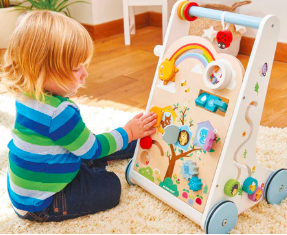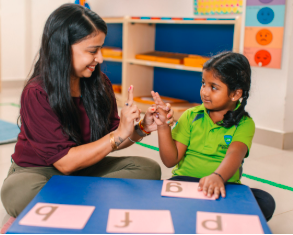From the moment a child is born, their brain begins a journey of rapid growth, with each new experience helping to build essential connections. One of the most powerful ways to support this development is through sensory play. Activities that engage sight, sound, touch, smell, and movement not only delight young learners but also lay the groundwork for thinking, language, motor skills, and social development.
Why Sensory Play Matters
Sensory play allows children to explore the world in ways that stimulate curiosity and build neural pathways. These hands-on experiences strengthen memory, improve focus, and support the ability to make connections between different kinds of information. Whether it’s feeling the texture of sand, hearing the splash of water, or smelling lavender during quiet time, each sensory moment fuels learning.
Engaging Activities to Try at Home or in Class
1. Water and Sand Play
Let children scoop, pour, and sift through sand or water. These actions develop fine motor skills while also teaching cause and effect—when water is poured, it moves. Simple but powerful.
2. Sensory Bins
Fill a plastic bin with items like dry rice, beans, or pasta. Hide small objects inside and ask children to find them using only their hands. This boosts tactile awareness and supports problem-solving.
3. Nature Walks
Outdoors, children can listen to birds, feel different textures like tree bark or grass, and notice the scent of flowers. These multi-sensory encounters are excellent for observation and descriptive language development.
4. Playdough and Clay
Molding shapes strengthens hand muscles and creativity. Add essential oils or spices to the dough to include smell as part of the experience.
5. Music and Movement
Dancing to music helps children connect sound with physical motion. This enhances coordination and rhythm while also releasing energy in a positive way.
6. Light and Shadow Exploration
Use flashlights, shadow puppets, or simply the sun to explore how light behaves. Children learn about contrast and depth while engaging their visual senses.
7. Scent Jars
Fill small containers with familiar smells—cinnamon, vanilla, orange peel—and let children guess each scent. This helps train the brain to associate smells with experiences.
Creating a Balanced Sensory Environment
While sensory activities are valuable, it’s important to balance stimulation with calm. Quiet corners, soft lighting, and cozy textures offer children space to process their experiences and feel secure.
Lasting Benefits of Sensory Play
Children who engage regularly in sensory play tend to show stronger language skills, improved emotional regulation, and better concentration. These experiences shape the brain in a lasting way, giving children tools to understand their world and relate to others with confidence.
Conclusion
Simple, thoughtful sensory activities can do wonders for a child’s brain development. By encouraging exploration through touch, sound, sight, and more, caregivers and educators provide meaningful support during the most critical years of growth. Every squish, splash, and sparkle matters.


